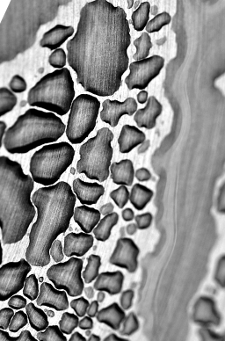Refrigeration gets refresh
 Scientists are working on the first new fridge design in decades.
Scientists are working on the first new fridge design in decades.
Chinese researchers have announced a major advancement that could transform cooling systems that have remained largely unchanged since the 1950s.
The breakthrough involves thermogalvanic cells, which use an electric current to trigger chemical reactions where iron ions gain and lose electrons, absorbing heat in one phase and releasing it in another.
This process creates a cooling effect without the need for traditional refrigerants or high energy input.
Published in Joule, a new study introduces an iron-based electrolyte enhanced through solvation entropy engineering.
By combining perchlorate salts with nitrile solvents, the researchers improved the cooling power by around 70 per cent compared to earlier systems.
This adjustment weakens interactions between iron ions and anions, increasing entropy change - a key factor in cooling efficiency.
“Thermogalvanic technology is on its way to our lives, either in the form of clean electricity or low-power cooling, and both research and commercial communities should be paying attention,” says Jiangjiang Duan of Huazhong University of Science and Technology, the study’s senior author.
Unlike vapour compression systems, which contribute to greenhouse gas emissions, thermogalvanic refrigeration relies on redox reactions where iron ions absorb and release heat as they gain or lose electrons. This process eliminates the need for harmful refrigerants and operates with minimal energy input.
The new electrolyte achieved a temperature coefficient of 3.73 millivolts per Kelvin - more than double previous records.
The system demonstrated a direct cooling effect of 1.42 Kelvin with just 0.11 watts per square centimetre of input, significantly outperforming earlier models limited to 0.1 Kelvin.
“While previous studies mostly focus on original system design and numerical simulation, we report a rational and universal design strategy of thermogalvanic electrolytes, enabling a record-high cooling performance that is potentially available for practical application,” Duan added.
With potential uses ranging from wearable cooling devices to industrial systems, the team plans to further improve efficiency and explore commercial applications.
They are also investigating new materials and system designs to maximise performance in real-world conditions.







 Print
Print


